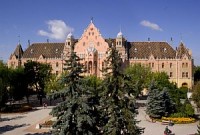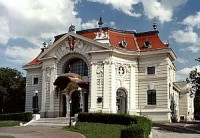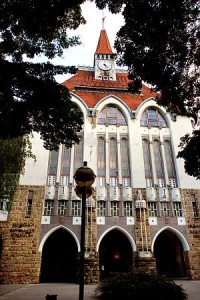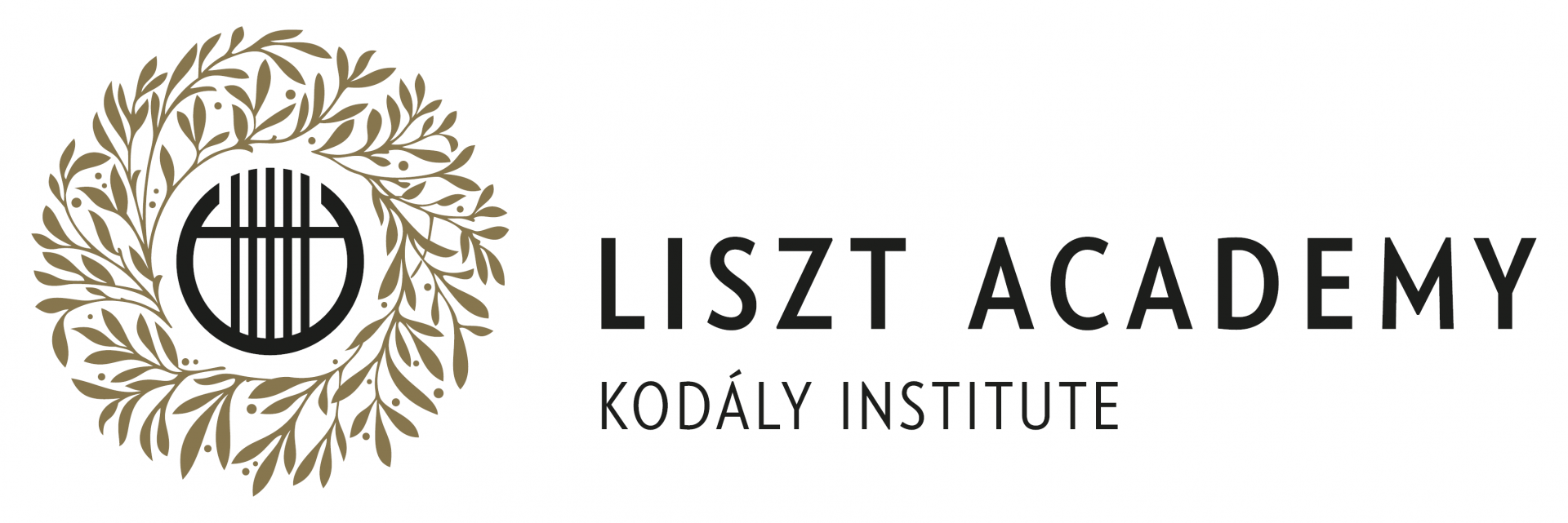Kecskemét - old
-----
Kecskemét – the capital of Bács-Kiskun County – fusing all the beauty and values of the Great Plain is situated in the middle of Hungary, approximately 85 kms from Budapest. The city – using its favourable geographical location – developed into the economic, administrative, educational, and cultural centre of the region; it gives home for several institutions of fine arts, unique collections, and dignified festivals. The name of the city originates from the word „kecske” (meaning „goat”) and „mét” means district. The goat can be seen in the coat of arms as well above the platform with the motto of the city beneath it: „Neither height, nor depth frightens us.”
Kecskemét has an individual image and its downtown recalls the secessionist mood of the past century.

The City Hall registered as the pearl of secession can be found at the Main Square. It was built between 1893-1897 according to the design of the architects Ödön Lechner and Gyula Pártos. The City Hall is one of the best-known buildings of Kecskemét.
You can hear the carillon on the facade of the building since 1983 playing the works of Kodály, Erkel, and Beethoven every hour. Its outside walls are decorated by the majolica of Zsolnay, which can be seen on other buildings in the town as well.
Opposite the Town Hall you can find the oldest architectural relic of Kecskemét, the Franciscan Church built in the 14th century; the locals call it the Church of Friars. Originally it was built in Romanesque style and after several reconstructions it has gained its current Baroque character. A Calvary was set up at the outer wall of fit. From the point of view of religious history it is important to note that it was used both by Catholics and Protestants until 1564.

The Neo-Baroque building of the theatre built for the Millenium of the country was named after the famous dramatist, native of the town, József Katona, who was the writer of the first Hungarian national drama. Its reminiscene of the Vígszínház (Comedy Theatre) in Budapest is not coincidental: they were both built by the plans of the famous Vienna-architects, Hellmer and Fellner. It is called by the locals as jewellery box. In front of the Theatre the Column of the Holy Trinity reminds us of the epidemic of Black Death that took a heavy toll on the population. The statue made of sandstone in 1742 is decorated with the figures of Saint Sebastian, Saint Roch, Saint Elisabeth of the House of Árpád and Saint Steven.
In the old street of Kecskemét– at the Kéttemplomköz – can be found the Zoltán Kodály Institute of Music Pedagogy in the building of a one-time Franciscan monastery where you can see an exhibition showing the lifestory of the famous composer and music educator, Zoltán Kodály (1882-1967).The institute was established in 1975 and it aims at the practice of Kodály’s conception of music education.
At the end of the street we find the Calvinist Church built in early Baroque style in the 1680s, the only stone church in the region during the Turkish occupation. The curiosity of the Main Square is that almost all denomination’s church can be found there, which is unique in the country.

Opposite the Calvinist Church is the New College erected in 1912. The palace was built in the style of Art Nouveau, decorated with Transylvanian motives. It is used as the Primary and Secondary Grammar School of the Calvinist College.
There are two famous buildings on the right of the New College: one of them is Cifrapalota (Ornamented Palace), a unique piece of architecture, known as the masterpiece of Art Nouveau with its wonderful „waving” walls, shining roof tiles and ceramic ornaments of plants and animals. It hosts the Kecskemét Art Gallery today.
The other building is the one-time synagogue built in Moorish-Romantic style between 1861-1864. It was converted into a conference centre during the 1970s. It is known as the House of Science and Technology exhibiting the plaster replicas of 15 Michelangelo statues.
The determinative building of the Main Square is the Big Catholic Church, which was built between 1774-1806. Its tower was ravaged by fire and earthquake. It is the biggest late Baroque styled cathedral on the Grait Plain. Its bell is 2400 kg; you can reach its 74 m tall tower on 94 steps.
The town hosts workshops and unique collections of music, fine arts and animation of international fame and recognised scientific institutions: Kecskemétfilm Ltd., International Ceramics Studio, "Szórakaténusz" Toy Museum and Workshop, Ciróka Puppet Theatre, Leskowsky Musical Instrument Collection, just to mention a few.
Besides these Kecskemét expects visitors with a whole range of recurring programmes year by year.
The most important music and dance groups of the town are well-known both in and outside Hungary.
Text and photos are from the official website of the town.



